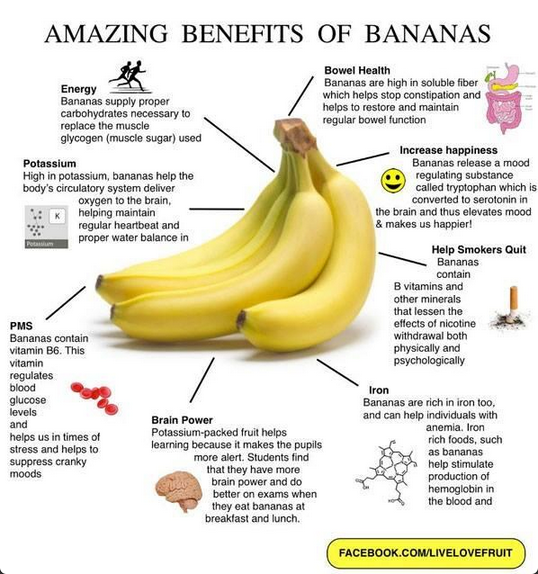Via WaPo
Tag Archives: wellness
10 Positive Energy Practices
This was first published on the Buddhist Broadcasting Network:
Here are 10 things I did to help overcome my negative thoughts that you can also try:
1. Meditate or do yoga.
One of the first things I did was head to a yoga class. It took my focus away from my thoughts and brought my attention to my breath. Yoga is also very relaxing which helped ease my mind. Yoga helped me stay present to my experience so instead of jumping to what could happen, it brought me back to the now—the only moment, the most important moment.
2. Smile.
I didn’t do much of this during the weekend so I literally had to bring myself in front of a mirror and force myself to smile. It really does help change your mood and relieve stress. I also felt lighter because it takes fewer muscles to smile than to frown.
3. Surround yourself with positive people.
I called a friend who I knew could give me constructive, yet loving feedback. When you’re stuck in a negative spiral, talk to people who can put things into perspective and won’t feed your negative thinking.
4. Change the tone of your thoughts from negative to positive.
For example, instead of thinking We are going to have a hard time adjusting to our living situation, replace that with We will face some challenges in our living situation, but we will come up with solutions that we will both be happy with.
5. Don’t play the victim. You create your life—take responsibility.
The way I was thinking and acting, you would think I was stuck. Even if our living situation becomes unbearable, there is always a way out. I will always have the choice to make change happen, if need be.
6. Help someone.
Take the focus away from you and do something nice for another person. I decided to make a tray of food and donate it to the Salvation Army. It took my mind off of things and I felt better for helping someone else.
7. Remember that no one is perfect and let yourself move forward.
It’s easy to dwell on your mistakes. I felt terrible that I acted this way and that I wasted our weekend. The only thing I can do now is learn from my mistakes and move forward. I definitely don’t want to have a weekend like that again.
8. Sing.
I don’t remember lyrics very well and it’s probably the reason that I don’t enjoy singing, but every time I do sing I always feel better . When we sing, we show our feelings and this provides an amazing stress relief.
9. List five things that you are grateful for right now.
Being grateful helps appreciate what you already have. Here’s my list: My cats, health, a six-week trip to Asia, a new yoga class that I’ll be teaching, and for my mom’s biopsy coming out clean.
10. Read positive quotes.
I like to place Post-It notes with positive quotes on my computer, fridge door and mirror as reminders to stay positive. Also, I’d like to share with you a quote by an unknown author that was shared in a meditation class that I attended:
Watch your thoughts, they become words.
Watch your words, they become actions.
Watch your actions, they become habits.
Watch your habits, they become your character.
Watch your character, it becomes your destiny.
Using plants as air filters
According to a top NASA scientist, some house plants can filter many dangerous chemicals out of indoor air. One of the best air filtering scrubbers is a robust rubber tree plant.
Are you in favour of fostering indoor plants that do a good job of cleaning household air?
Some plants are exceptional in that capacity.
Improving air we breathe is possible with any of the following foursome:
Areca Palm (Chrysalidocarpus lutescens) is a.k.a. yellow palm or butterfly palm.
Care includes keeping the root-ball damp, misting leaves often with water, feeding monthly with liquid fertilizer (except in winter) and pruning off dead material promptly.
Lady Palm (Rhapis excelsa) is one of the most effective for improving indoor air quality and is highly resistant to insect pests. It has shiny green fanlike leaves six to 12 inches wide.
Care includes watering generously especially during spring and summer but less so in late fall and winter. Feed it monthly from February to October with half strength liquid fertilizer based on label instructions. Cut off any leaf tips that turn brown.
Peace Lily (Spathiphyllum sp) This much-loved indoor bloomer is famous for producing beautiful white flowers. It’s less often seen with yellow and pink blooms. If you want a reliable smaller plant for indoors, Peace Lily is a good reliable choice.
Rubber Plant (Ficus robusta) with thick, leathery, dark green leaves. It requires very little care, tolerates low light, cool temperatures and is very effective at removing chemical toxins from indoor air — the best of this genus yet tested.
A rubber tree is about as easy-care “as they come.”
Water regularly between early summer through autumn, but allow soil to dry slightly between waterings.
Feed monthly with a touch of liquid fertilizer during summer months.
Cut back on watering during our low light time of year from November through February as rubber plant doesn’t appreciate over watering during short fall and winter days. In time, it’s known to touch the ceiling. Some form of staking or support may be required.
How many plants you ask?
One or two good-sized plants per 100 square feet of interior space will do, but more is okay if you choose.
Click to read more on the best plants to improve air quality by viewing the complete article via Portagedailygraphic.com.

6 Breathing Exercise To Relax In 10 Minutes Or Less
Over-worked, under-slept, and feeling the pressure like whoa? There are plenty of ways to find calm — without investing in a four-hand spa massage. Turns out, all we need is a pair of healthy(ish) lungs, our breath, and 10 minutes or less. Here are six expert-approved ways to relax using breathing techniques borrowed from yoga, meditation, and even the therapist’s chair.
Sama Vritti or “Equal Breathing”
How it’s done: Balance can do a body good, beginning with the breath [3]. To start, inhale for a count of four, then exhale for a count of four (all through the nose, which adds a natural resistance to the breath). Got the basic pranayama down? More advanced yogis can aim for six to eight counts per breath with the same goal in mind: Calm the nervous system, increase focus, and reduce stress, Pacheco says.
When it works best: Anytime, anyplace — but this is one technique that’s especially effective before bed. “Similar to counting sheep,” Pacheco says, “if you’re having trouble falling asleep, this breath can help take your mind off the racing thoughts, or whatever might be distracting you from sleep.”
Level of difficulty: BeginnerAbdominal Breathing Technique
How it’s done: With one hand on the chest and the other on the belly, take a deep breath in through the nose, ensuring the diaphragm (not the chest) inflates with enough air to create a stretch in the lungs. The goal: Six to 10 deep, slow breaths per minute for 10 minutes each day to experience immediate reductions to heart rate and blood pressure, McConnell says. Keep at it for six to eight weeks, and those benefits might stick around even longer.
When it works best: Before an exam, or any stressful event. But keep in mind, “Those who operate in a stressed state all the time might be a little shocked how hard it is to control the breath,” Pacheco says. To help train the breath, consider biofeedback tools such as McConnell’s Breathe Strong app, which can help users pace their breathing wherever they are.
Level of difficulty: BeginnerClick to read four more excercies on Altering Perspectives — Pranayama
Via Greatist and Altering Perspectives
Image via AP

Water Meditation
When I was in London conducting the weekend Free Yourself meditation program, one of the guided meditations I led the group through was a meditation on conscious drinking. So often, in our busy lives, we grab water by the glass or by the bottle, chug it down when we’re parched, and dump whatever is left back down the drain. We don’t feel connected to our water the way people did in generations past, when water was gathered at a stream or from a well. We don’t know the thrill of grateful exhilaration felt by people in dry lands when rains come, or when clean water is discovered. For this reason, the conscious drinking meditation is one of the most important meditations we can do; it awakens our natural gratitude for the hydration we so often take for granted, and it also rekindles our awareness of who we are as a part of all things around us.
The meditation itself is really very simple, and you can do it anywhere, any time. First, get yourself a glass (or bottle, or even a mug- whatever,) of water. Make sure it’s pure water, clean and free of pollutants. For a few moments, hold it near to your eyes and look at it closely. Then hold it up to your ear and swish it around in it’s glass and listen to the sound it makes. Put it under your nose, and breathe in it’s clean scent. Dip your fingers into it, and feel it’s cool wetness. Then, holding it gently, close your eyes, and imagine the journey your water has taken to make it into your cup.
Click to read more on water meditation.
Via Manithyasudevi/Image via Deviant Art
NYT: Mindfulness: Getting Its Share of Attention
We’ve written about the yoga benefits for coders and programmers and here’s an excerpt of another interesting article about mindfulness and benefits. Mr. Gordhamer started Wisdom 2.0 in 2009 to examine how we can live with technology without it swallowing us whole. The wait lists for his panel talks and conferences now run into the hundreds.
The “Disconnect to Connect” meet-up was typical. The audience was mostly young, mostly from the Silicon Valley tech scene and entirely fed up with taking orders from Siri. “There was a time when phones didn’t tell you to do everything,” said Mr. Gordhamer, 45, as the conversation got rolling. “What’s work, what’s not work, it’s all become blurred.”
Mr. Gordhamer said the desire is rampant for “non-doing,” as he put it. “What the culture is craving is a sense of ease and reflection, of not needing to be stimulated or entertained or going after something constantly. Nobody’s kicking out technology, but we have to regain our connection to others and to nature or else everybody loses.
It is interesting that Wired and the NYT have both run seperate pieces on the Wisdom conference and mindfulness in Silicon Valley. Read the rest of the article about the growth of mindfulness and meditation in Silicon Valley.
Image via NYT and Roman Muradov
75 Benefits of Meditation for an Inspired Life
Via Amanda Froelich and the Waking Times
How many times have you heard ‘meditation is good for you!’, yet you resist the actual act of sitting in silence because the mind is too great a foe to face? You’re not alone if the word ‘meditation’ strikes more fear than chords of peace, but by changing the way you think about it, perhaps it will become easier to devote at least 5 minutes per day towards contemplative reflection.
Whatever your religion, spiritual beliefs, or hectic schedule looks like, there is always time to nurture yourself a bit; this is exactly what meditation is, and the following benefits prove it!
Instead of dreading the ‘quiet time’, look forward to all the amazing benefits you can receive just by choosing to be good to yourself while letting the busy world fade away…
Psychological Benefits
Builds self-confidence
Increases Serotonin levels
Resolves phobias and fears
Helps control own thoughts
Helps with focus and concentration
Increases creativity
Increased brain wave coherence
Improves learning ability and memory
Increased feelings of vitality and rejuvenation
Increased emotional stability
Click to see the other 65 benefits of meditation
Mindfulness Growing in Silicon Valley
We’ve touched on the yoga benefits for coders and programmers and it seems this trend is continuing throughout Silicon Valley. Check out this Wired article on mindfulness and meditation at Google and other tech companies:
Chade-Meng Tan is perched on a chair, his lanky body folded into a half-lotus position. “Close your eyes,” he says. His voice is a hypnotic baritone, slow and rhythmic, seductive and gentle. “Allow your attention to rest on your breath: The in-breath, the out-breath, and the spaces in between.” We feel our lungs fill and release. As we focus on the smallest details of our respiration, other thoughts—of work, of family, of money—begin to recede, leaving us alone with the rise and fall of our chests. For thousands of years, these techniques have helped put practitioners into meditative states. Today is no different. There’s a palpable silence in the room. For a moment, all is still. I take another breath.
More than a thousand Googlers have been through Search Inside Yourself training. Another 400 or so are on the waiting list and take classes like Neural Self-Hacking and Managing Your Energy in the meantime. Then there is the company’s bimonthly series of “mindful lunches,” conducted in complete silence except for the ringing of prayer bells, which began after the Zen monk Thich Nhat Hanh visited in 2011. The search giant even recently built a labyrinth for walking meditations.
Many of the people who shaped the personal computer industry and the Internet were once members of the hippie counterculture. So an interest in Eastern faiths is all but hardwired into the modern tech world. Steve Jobs spent months searching for gurus in India and was married by a Zen priest. Before he became an American Buddhist pioneer, Jack Kornfield ran one of the first mainframes at Harvard Business School.
BUDDHISM TEACHES THAT WE ARE ALL INTERCONNECTED. AND NOWHERE IS THAT MORE APPARENT THAN ON FACEBOOK.
And if we start such training, Meng insists, we won’t just be helping ourselves. “My dream is to create the conditions for world peace, and to do that by creating the conditions for inner peace and compassion on a global scale,” he writes. “Fortunately, a methodology for doing that already exists … Most of us know it as meditation.”
Click to read more of this meditation and mindfulness benefits piece by Noah Shachtman.
Image via Google Commons






